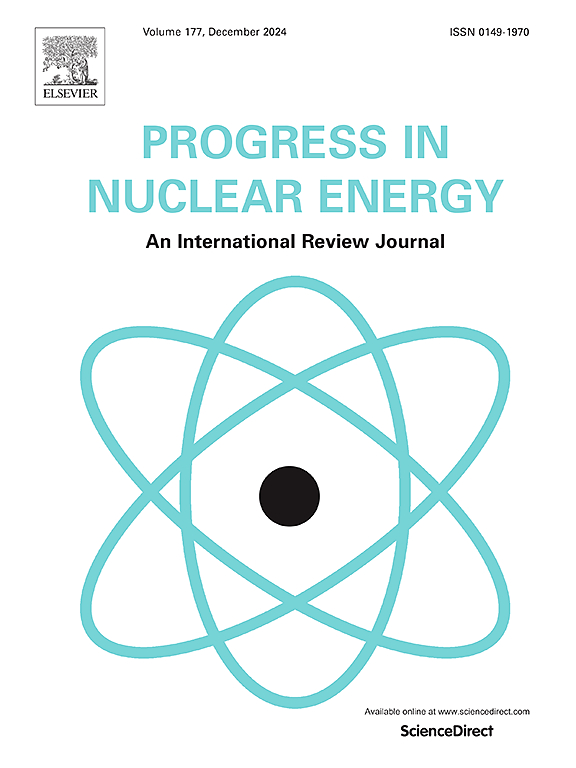依纳利纳核电厂堆填区弃置废物的特定清理水平的厘定
IF 3.3
3区 工程技术
Q1 NUCLEAR SCIENCE & TECHNOLOGY
引用次数: 0
摘要
伊格纳利纳核电站(Ignalina NPP)运行产生的工业废物被处理在工业废物堆中,即所谓的“填埋设施”。伊格纳利纳核电站的最终退役计划预计将制定处置废物的具体清理水平。特别许可的适用将使废物不受管制,并将现有的堆填区转变为传统的废物处置设施。本文描述和讨论了情景、模型和参数值,用于推导在伊格纳利纳核电站处理的垃圾填埋场的具体清除水平。评估中考虑的放射性核素是基于对废物特性的分析,包括3H、60Co、94Nb、137Cs和241Am。所得的特定清除率比相应的一般清除率高约3-27倍。本文章由计算机程序翻译,如有差异,请以英文原文为准。
Derivation of specific clearance levels for landfill disposed of waste at Ignalina NPP
Industrial waste generated from the operation of Ignalina Nuclear Power Plant (Ignalina NPP) was disposed of in industrial waste dumps, the so-called ‘landfill facility’. The Ignalina NPP's final decommissioning plan foresees the development of specific clearance levels for the disposed waste. The application of specific clearance would allow the removal of the waste from regulatory control and the conversion of the existing landfill into a conventional waste disposal facility.
This paper describes and discusses scenarios, models, and parameter values that are used to derive specific clearance levels for the landfill disposed of waste at Ignalina NPP. The radionuclides considered in the assessment are based on the analysis of the waste specifics and include 3H, 60Co, 94Nb, 137Cs, and 241Am. The derived specific clearance levels are higher than the corresponding generic clearance levels by approximately 3–27 times.
求助全文
通过发布文献求助,成功后即可免费获取论文全文。
去求助
来源期刊

Progress in Nuclear Energy
工程技术-核科学技术
CiteScore
5.30
自引率
14.80%
发文量
331
审稿时长
3.5 months
期刊介绍:
Progress in Nuclear Energy is an international review journal covering all aspects of nuclear science and engineering. In keeping with the maturity of nuclear power, articles on safety, siting and environmental problems are encouraged, as are those associated with economics and fuel management. However, basic physics and engineering will remain an important aspect of the editorial policy. Articles published are either of a review nature or present new material in more depth. They are aimed at researchers and technically-oriented managers working in the nuclear energy field.
Please note the following:
1) PNE seeks high quality research papers which are medium to long in length. Short research papers should be submitted to the journal Annals in Nuclear Energy.
2) PNE reserves the right to reject papers which are based solely on routine application of computer codes used to produce reactor designs or explain existing reactor phenomena. Such papers, although worthy, are best left as laboratory reports whereas Progress in Nuclear Energy seeks papers of originality, which are archival in nature, in the fields of mathematical and experimental nuclear technology, including fission, fusion (blanket physics, radiation damage), safety, materials aspects, economics, etc.
3) Review papers, which may occasionally be invited, are particularly sought by the journal in these fields.
 求助内容:
求助内容: 应助结果提醒方式:
应助结果提醒方式:


